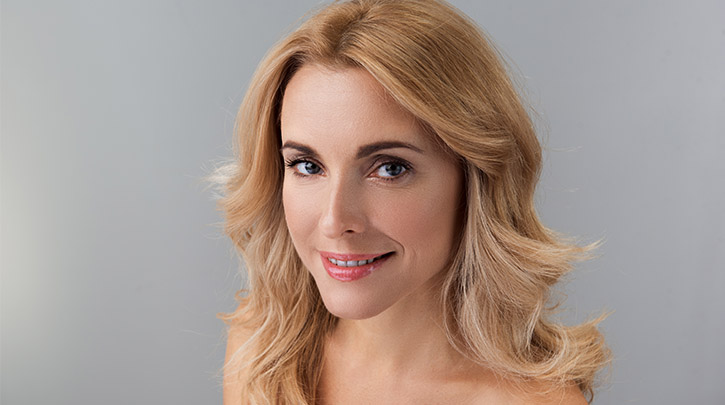
- United States
Get non-surgical solutions for today's top aesthetic concerns with Venus Treatments. Join thousands of satisfied patients worldwide!
- Loading...
- All Regions
Get non-surgical solutions for today's top aesthetic concerns with Venus Treatments. Join thousands of satisfied patients worldwide!

Spider veins are one of the most common types of visible veins, but while they are completely natural, not everyone will get them. In fact, in the United States, 20% of men and 15% of women, on average, will never experience spider veins. Wondering why you happen to be one of the 80-85% who do have spider veins?
While it would be nice to have a simple, straightforward answer, the reality is anything but that. The root cause of spider veins is simply damaged blood valves, but there are a host of factors that come together to increase the risk of valves becoming damaged in the first place and any one of those factors may also be modified by genetics. In other words, the matter is complex, so let’s dive into this web. Here, we shed some light on the impact of damaged valves, some of the most common factors that lead to spider veins, and how you might minimize their appearance.
One of the most common types of visible veins, spider veins are small, superficial veins located between the inner and outer layers of skin. Spider veins often appear thin, in a web-like pattern, and blue or purple in color. They commonly appear on the legs but can certainly develop in other areas of the body depending on blood circulation, which is, after all, the root cause of both these visible veins and varicose veins. In fact, spider veins can be an early warning sign of varicose veins, which may require surgical intervention.
Spider veins are the effect of a damaged blood valve. Generally speaking, in a typical, healthy body, the heart is responsible for pumping blood through the entire body, delivering oxygen and nutrients to cells through blood vessels. Starting from the heart, blood circulates outward to the legs, arms, and head via arteries and is pumped back to the heart via veins. In your veins, there are little valves that help to keep blood flowing in one direction, back towards the heart. If a valve is weakened or damaged, blood falls back downward and may pool, causing the appearance of spider and varicose veins. While visible veins generally aren’t a medical concern—spider veins, in particular, are simply superficial after all—they may certainly cause cosmetic concern for many.
So, what factors may increase your risk of damaged valves and the resulting development of spider veins?
While it may be tempting to add massaging or dry brushing to your below-the-belt beauty care to theoretically promote circulation and reduce the appearance of spider veins, these treatments are unlikely to be effective. This is because the main concern is damaged valves within the veins. Once valves are weakened, the damage can’t be undone. However, aesthetic treatments can help to reduce the appearance of superficial spider veins and broken blood vessels by targeting pigment within the vein.
Powered by Intense Pulsed Light (IPL) technology, Venus Versa™ photofacial treatments can effectively reduce the appearance of spider veins. Targeting pigment under the skin’s surface, within the vein itself, these photofacial treatments deliver thermal (heat) energy, causing superficial spider veins to contract, scar over, and fade. With a customized plan, photofacial treatments may be adapted to suit your needs, whether you’re treating spider veins on the legs or vascular marks on the face. Because spider veins are linked to blood flow, new ones may pop up or treated veins may appear to “return.” For this reason, maintenance treatments may be required. Your treatment provider will provide more insight into a recommended treatment plan to meet your long-term aesthetic needs.
Ready to get started? Locate a certified Venus Versa™ photofacial treatment provider near you using the search field below.
Find a certified Venus Treatments provider near you today who specializes in today’s top aesthetic medical solutions.



Search below to find a provider near you and to learn about our non-surgical aesthetic treatments with ARTAS®, NeoGraft®, Venus Bliss™, Venus Bliss MAX™, Venus Versa™, Venus Legacy™, Venus Velocity™, Venus Viva™ MD, and Venus Glow™.
For more information call: (888) 907-0115 // [email protected] // 4001 SW 47th Ave, Suite 206, Davie, Florida, 33314
REGULATORY CLEARANCES [ More ]
Venus Bliss™ is cleared by the FDA for non-invasive lipolysis of the abdomen and flanks in individuals with a Body Mass Index (BMI) of 30 or less, with the diode laser applicators. The (MP)2 applicator is cleared by the FDA for temporary reduction in the appearance of cellulite.
Venus Versa™ is cleared by the FDA as a multi-application device intended to be used in aesthetic and cosmetic procedures. The SR515 and SR580 applicators are cleared by the FDA for the treatment of benign pigmented epidermal and cutaneous lesions and treatment of benign cutaneous vascular lesions. The HR650/HR650XL and HR690/HR690XL applicators are cleared by the FDA, for the removal of unwanted hair and to effect stable long-term or permanent hair reduction for Fitzpatrick skin types I-IV. The AC Dual applicator is cleared by the FDA for the treatment of acne vulgaris. The DiamondPolar™ and OctiPolar™ applicators on the Venus Versa™ system are cleared by the FDA for non-invasive treatment of moderate to severe facial wrinkles and rhytides on females with Fitzpatrick skin types I-IV. The NanoFractional RF™ applicator is cleared by the FDA for dermatological procedures requiring ablation and resurfacing of the skin.
NeoGraft® is cleared by the FDA with indication for use in suction-assisted follicular extraction and re-implantation. NeoGraft® is an auto-graft system and can be used on both male and female patients.
ARTAS iX™ is cleared by the FDA with indication for use for harvesting hair follicles from the scalp in men diagnosed with androgenic alopecia (male pattern hair loss) who have black or brown straight hair. ARTAS iX™ is intended to assist physicians in identifying and extracting hair follicular units from the scalp during hair transplantation; creating recipient sites; and implanting harvested hair follicles.
Venus Legacy™ is cleared by the FDA for the non-invasive treatment of moderate to severe facial wrinkles and rhytides in females with Fitzpatrick Skin Types I-IV with the OctiPolar™ and DiamondPolar™ applicators, and temporary reduction in the appearance of cellulite with the 4D Body (LB2) and 4D Face (LF2) applicators.
Venus Velocity™ is cleared by the FDA for hair removal, permanent hair reduction (defined as the long-term stable reduction in the number of hairs re-growing when measured at 6, 9 and 12 months after the completion of a treatment regimen), and the treatment of pseudofolliculitis barbae for all Fitzpatrick skin types.
Venus Viva™ is cleared by the FDA for dermatological procedures requiring ablation and resurfacing of the skin. The DiamondPolar™ applicator is cleared by the FDA for the treatment of moderate to severe wrinkles and rhytides in Fitzpatrick skin types I-IV.
Venus Freeze Plus™ is cleared by the FDA for the non-invasive treatment of moderate to severe facial wrinkles and rhytides in Females with Fitzpatrick skin types I-IV.
Venus Heal™ is cleared by the FDA for the relief of minor muscle aches and pain, relief of muscle spasm, and temporary improvement of local blood circulation. These indications enable the treatment of certain soft tissue injuries and conditions.
Venus Freeze™ is cleared by the FDA for the non-invasive treatment of moderate to severe facial wrinkles and rhytides in Females with Fitzpatrick skin types I-IV.
Venus Glow™ is cleared by the FDA as a Class I motorized dermabrasion device. It provides a dermal rejuvenation treatment that works to open up and deep-clean pores. Venus Concept is the exclusive distributor for Venus Glow™.
Venus Swan™ is cleared by the FDA for the non-invasive treatment of moderate to severe facial wrinkles and rhytides.
Copyright © 2025 Venus Concept. All rights reserved.
You are entering our website. For other countries/regions and language options, please click the SELECT A DIFFERENT REGION button below.
SELECT A DIFFERENT REGIONAre you looking to get a treatment? Please visit our patient website to learn more.
Click HereUnsure which aesthetic treatment is right for you? Take this quick and easy quiz to discover treatments that suit your needs.
Get Started